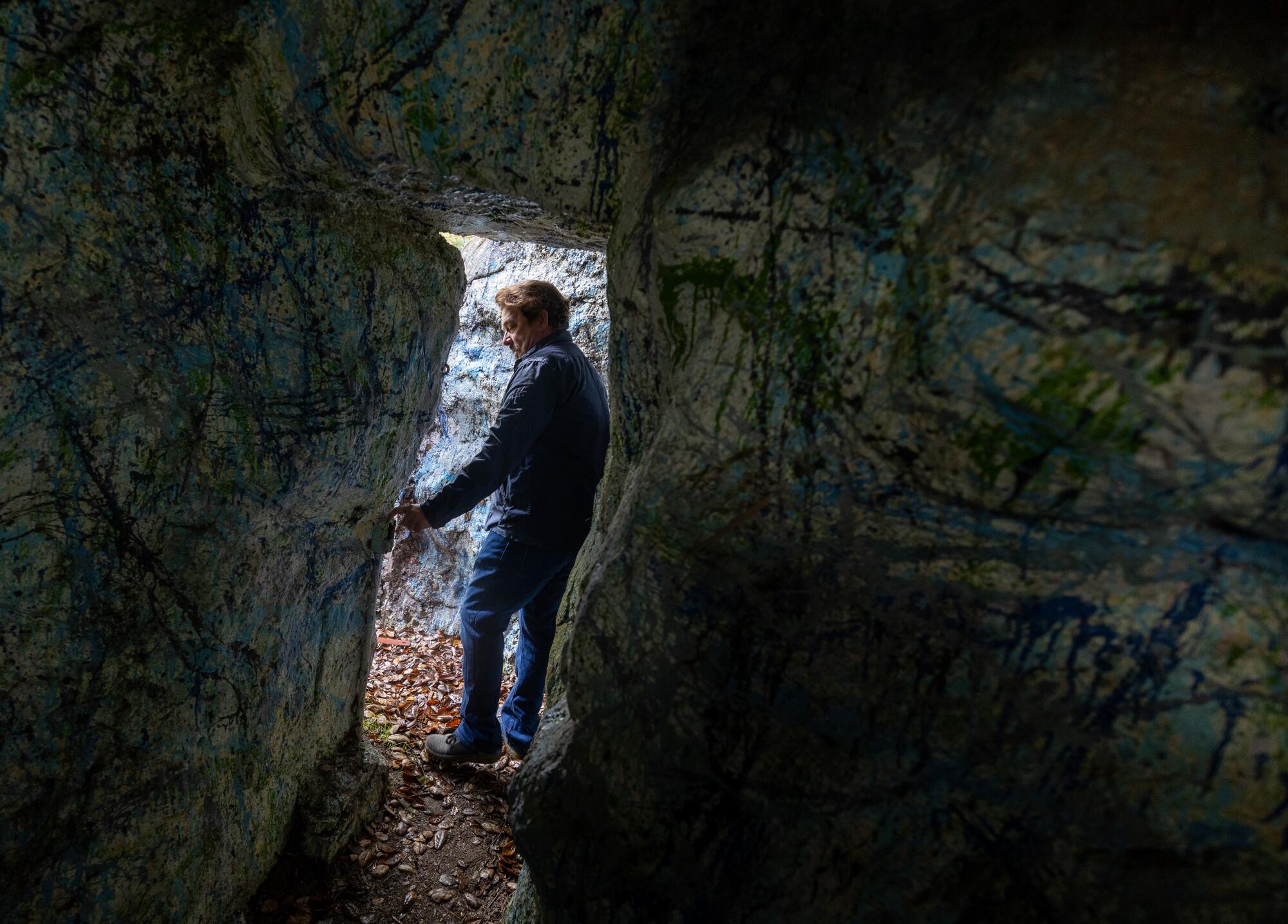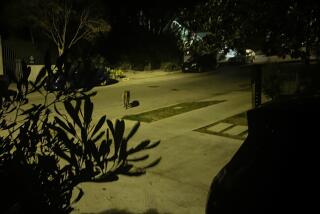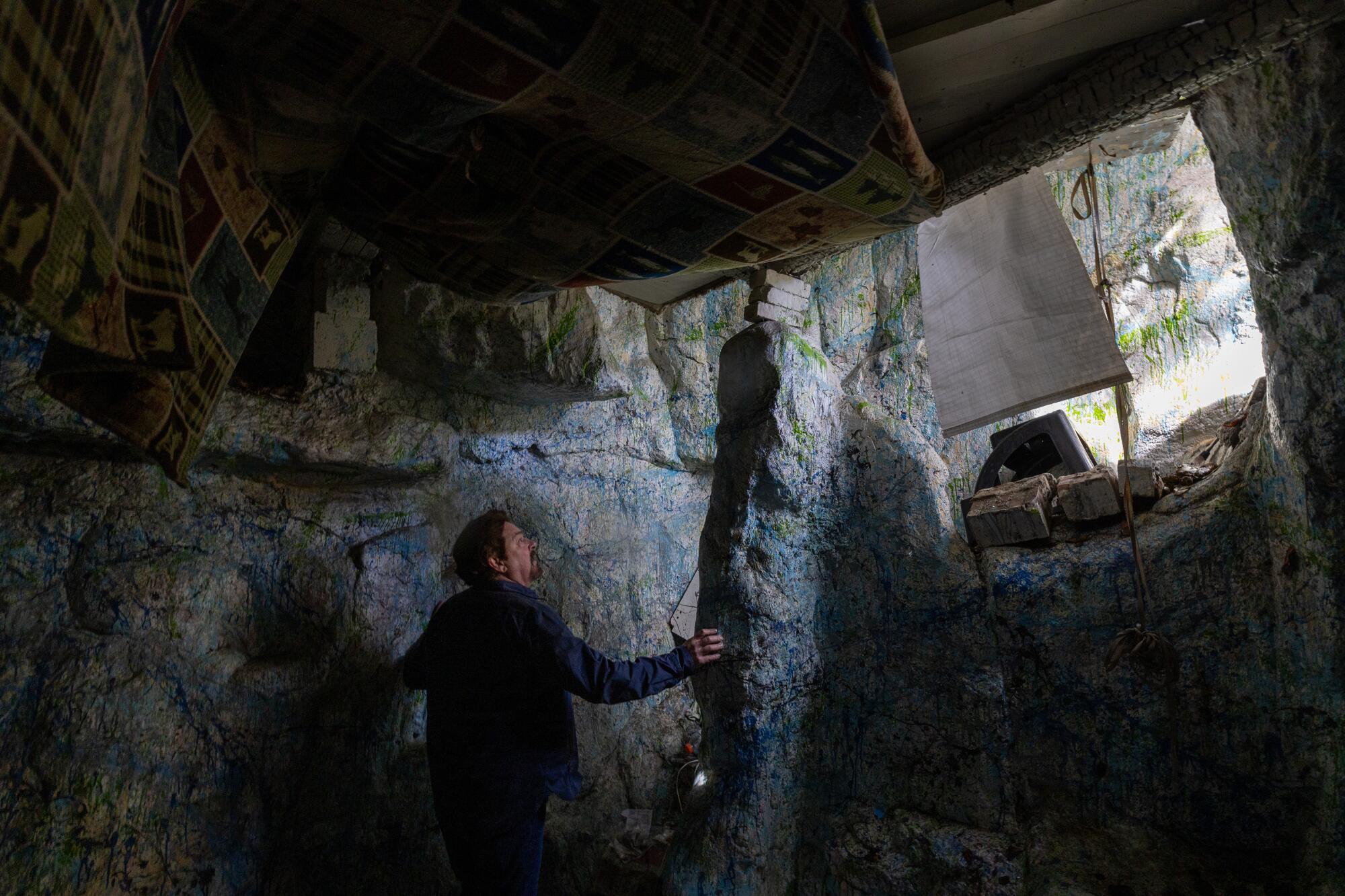
- Share via
Conservationists are hoping to purchase a spring-fed woodsy hollow in Laurel Canyon that was a hot spot for rockers in the patchouli-scented 1960s. The only catch is the seller says they need to come up with the $1-million payment within 60 days.
The countdown clock started ticking on Wednesday, when the Mountains Recreation and Conservation Authority and Citizens for Los Angeles Wildlife launched a fundraising campaign to acquire the prime piece of real estate in one of the oldest hillside communities in Los Angeles.
Today, the 2.4-acre parcel of oak forest, 100-foot-tall redwoods, crumbling stone stairways and mysterious man-made caverns splattered with fluorescent paint serves as a key wildlife passageway through the heart of the Hollywood Hills. Among the wildlife that frequent the area are coyotes, bobcats, deer and a male mountain lion.
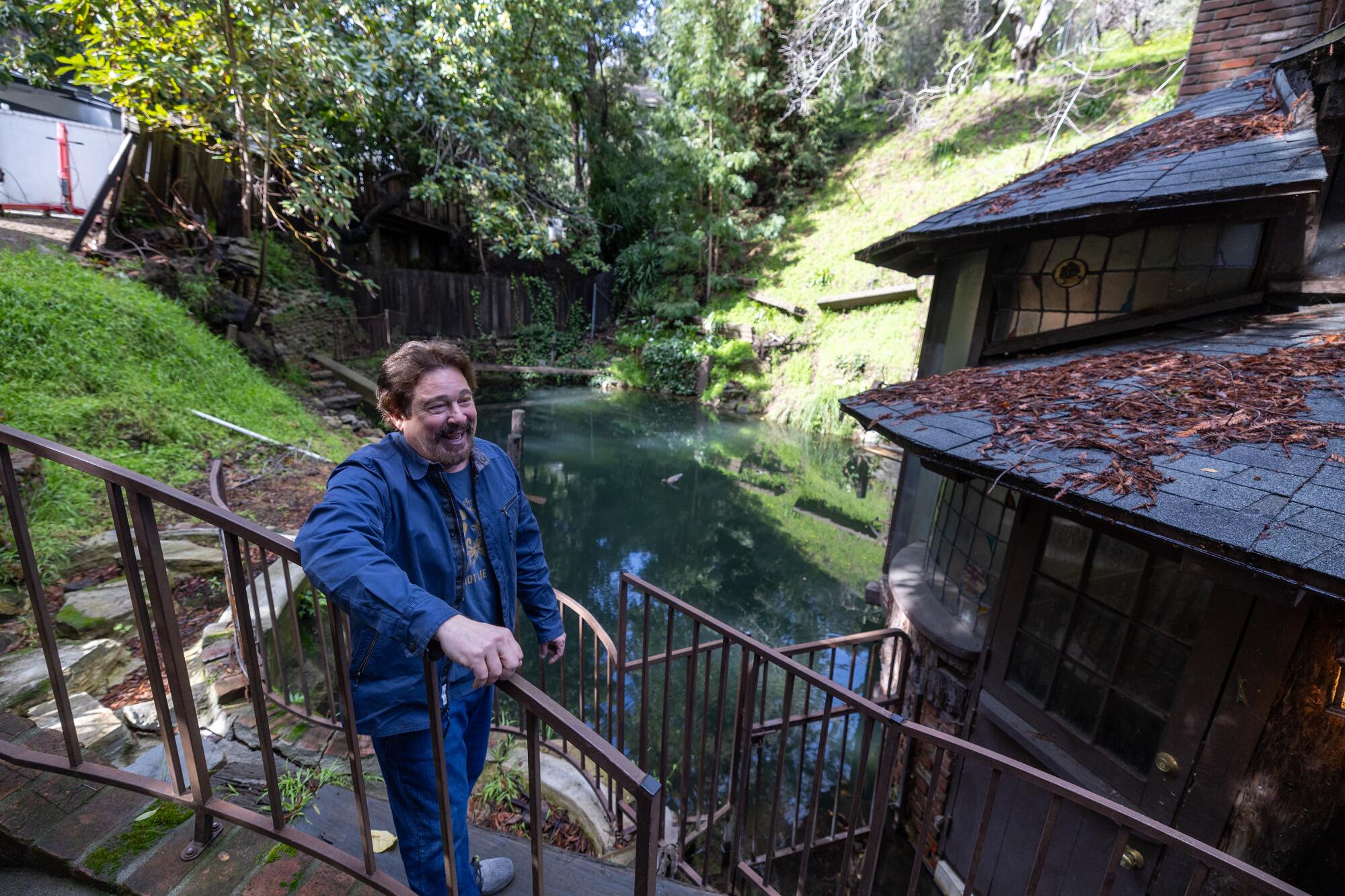
“We’re going to turn this place into a hangout for salamanders and frogs,” said Paul Edelman, chief ecologist for the MRCA. As he spoke, Edelman lifted his arms as if to embrace the natural inhabitants of a sliver of Los Angeles rooted in flower power.
Back in the summer of 1968, Frank Zappa, his wife Gail and their daughter, Moon Unit, lived there in a lodge that became a clubhouse where emerging superstars the likes of Mick Jagger, Joni Mitchell and Jimi Hendrix gathered to jam.
A new chapter in the colorful history of the property at the corner of Laurel Canyon Boulevard and Lookout Mountain Avenue opened on Wednesday with the start of the “let’sbuylaurelspring.org” campaign intended to acquire the land and transfer it to the MRCA, a coalition of public agencies dedicated to preserving open spaces and wildlife habitat.
Tony Tucci, co-founder of Citizens for Los Angeles Wildlife, said future fundraising efforts may be needed to sponsor cleanups, restore pathways and tattered fences and rip out thickets of invasive ivy.
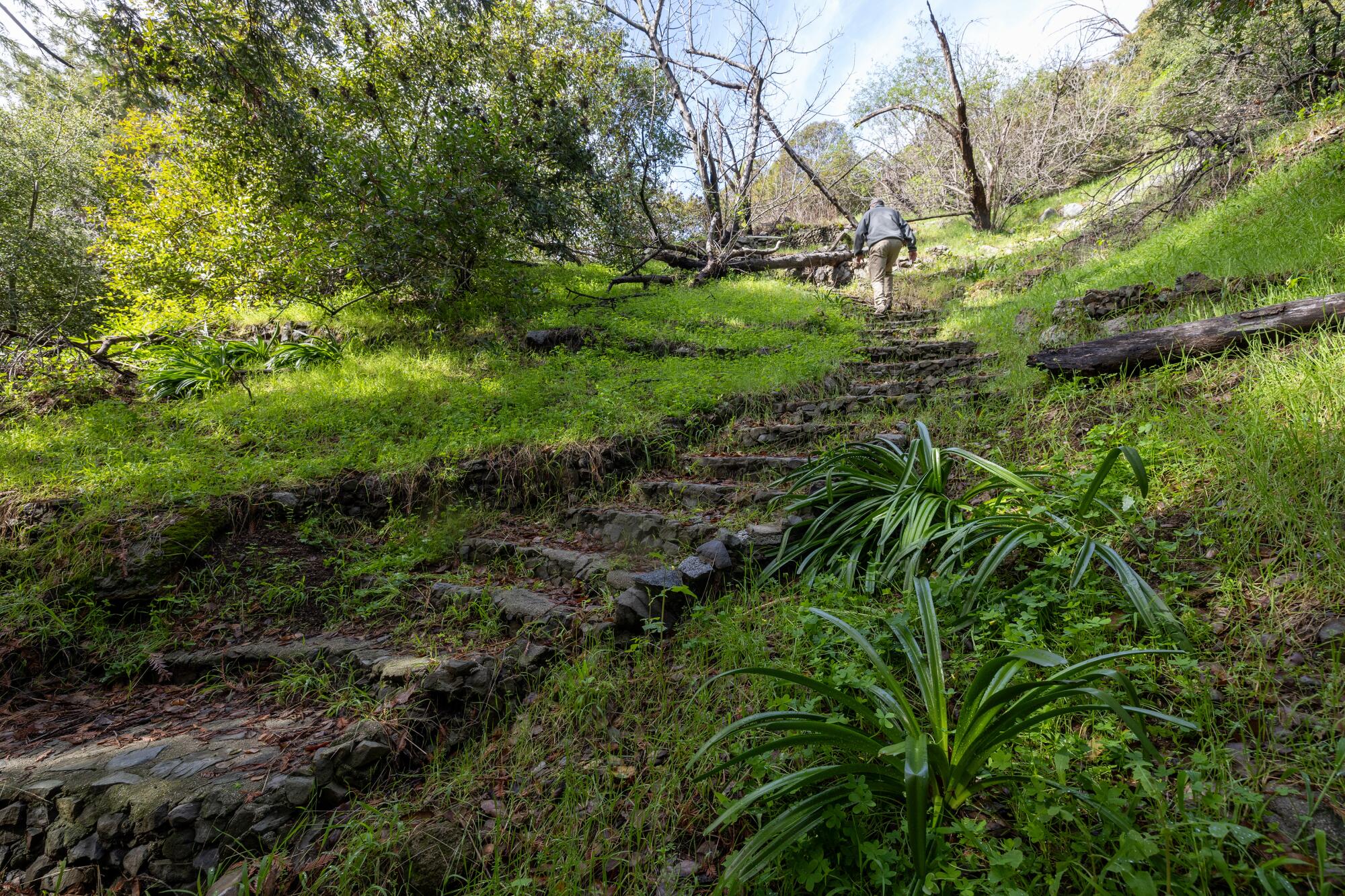
Recently, Tucci sauntered along a cave-pocked hill shaded by black walnut trees. The future of the dugouts has yet to be determined, he said.
Local legend suggests they were carved into the landscape more than a century ago to serve as temporary shelters for hunting parties. After the Age of Aquarius had gained a toehold in the 1960s, however, they provided a unique “cave cabin” experience for hippies and seekers. They are now being viewed as a potential liability.
“We want to discourage visitors from straying into these caves,” Tucci said. “So, some will be filled in with soil. The walls of some others will be painted brown to accommodate wild animals that have no interest in mind-bending images.”
The area has always been a haven for wildlife. Woodpeckers hunt for insects in the oak trees. Hawks and owls prey on rodents bounding across grassy slopes. Western toads and tree frogs thrive in the spring water that seeps from the base of an arched alcove fortified with concrete and then into a murky pond where carp cruise beneath a battered life-size rubber duck floating upside down.
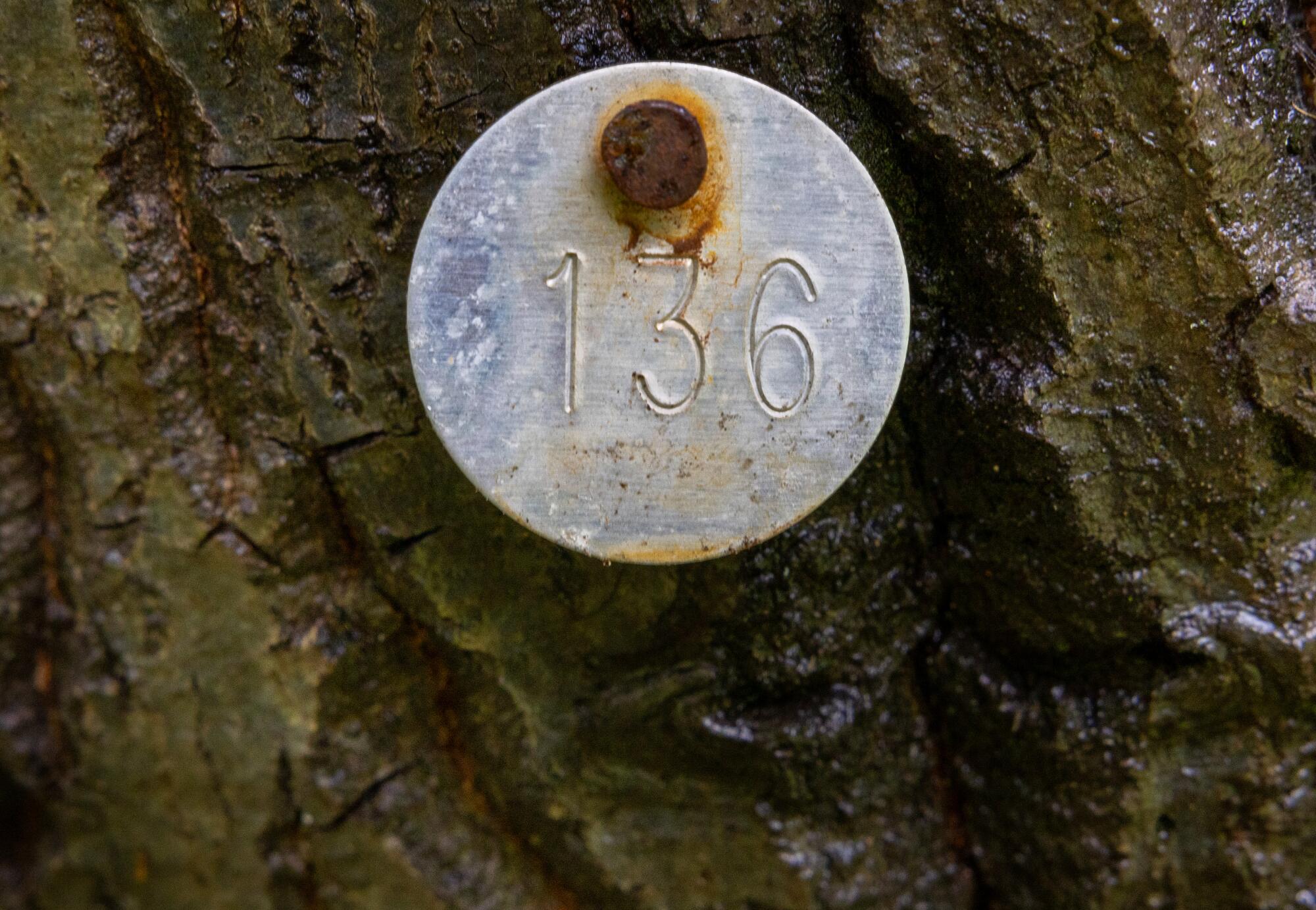
Then there is the un-collared and unstudied male mountain lion that has been elusively and peacefully coexisting with humans in the area for at least 10 years.
The lion’s home range spans the eastern Santa Monica Mountains between the 405 and 101 Freeways — about five miles west of the area where legendary mountain lion P-22 roamed for more than a decade until he was hit by a vehicle and found injured in a Los Feliz backyard.
State officials decided to euthanize P-22 in December 2022 because he was suffering from numerous health issues.
The mountain lion prowling Laurel Canyon has been adopted as CLAW’s mascot, a living symbol of how the 10-year-old organization’s initiatives to protect habitat in the area have been gaining momentum.
A previous partnership between CLAW and the Laurel Canyon Assn., for example, resulted in the purchase of 17 acres of nearly pristine hillsides that are being maintained by the MRCA.
The parcel currently under consideration has a rich history of flamboyant characters and swindlers who began arriving after the turn of the last century, a time when Los Angeles was growing out of its skin.
Jonathan Earl, a self-appointed historian of Laurel Canyon, has kept track of the area’s growth by collecting maps, historical documents and advertisements posted in local newspapers and magazines.
Development here was initially spurred more than a century ago by Charles Spencer Mann, who led real estate investor groups that bought property up and down the canyon, including the parcel currently sought by the MRCA.
In the early 1900s, the property was leased to Laurel Canyon Water Co., which pitched bottled water “ready for your delectation, just as it comes bubbling from the rocks of Laurel Canyon.” A crate of four bottles sold for 50 cents.
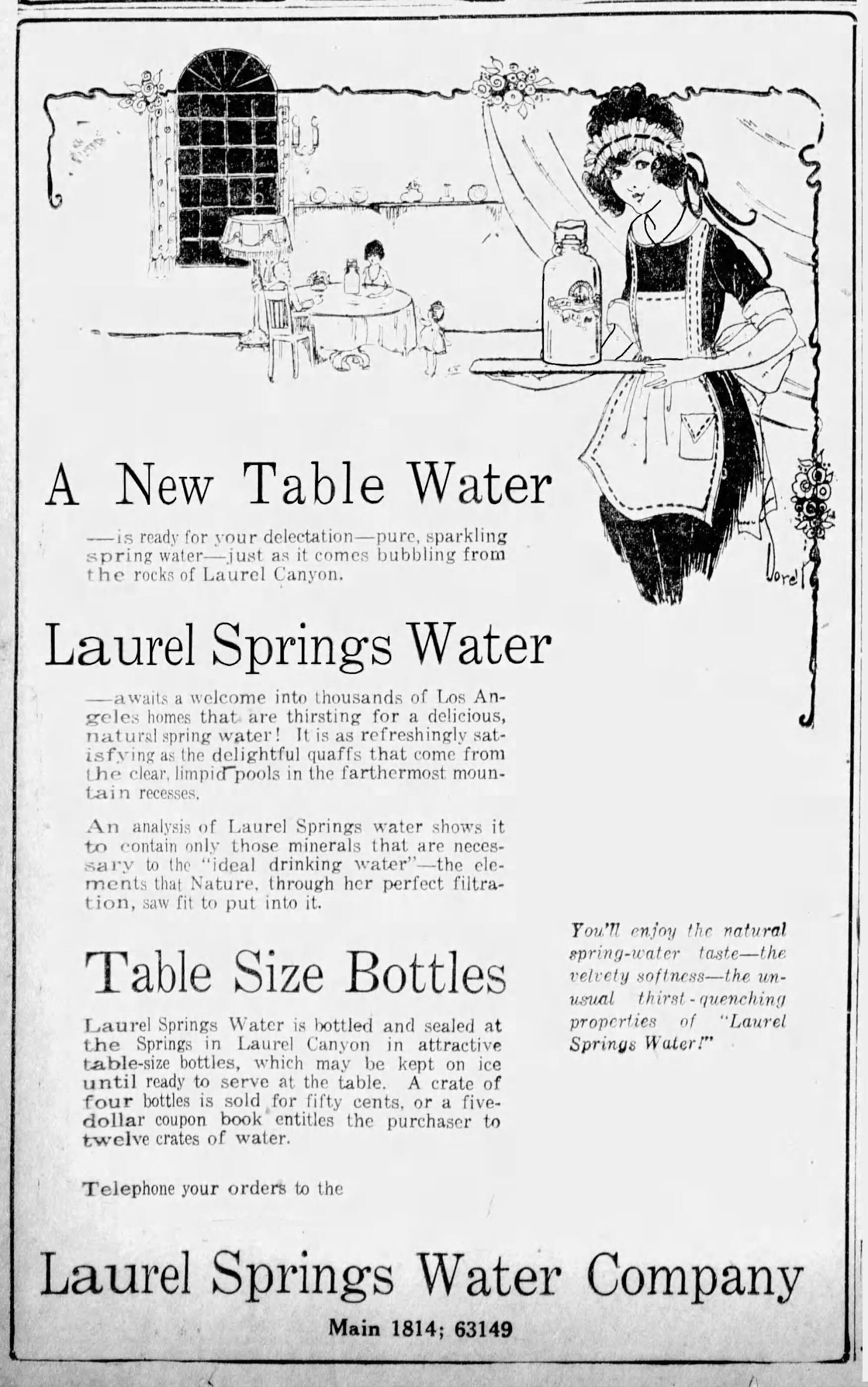
The property was purchased in the 1920s by silent film star Bessie Love. To hear some tell it, her neighbors included the famous illusionist and escape artist Harry Houdini and his wife, Wilhelmina Beatrice Houdini.
Laurel Canyon became a hub for counterculture activity and psychedelic journeys in the late 1960s. Local residents included musicians Carole King, Cass Elliot of the Mamas & the Papas, Jim Morrison of the Doors, and Zappa of the Mothers of Invention.
Locals still talk about a 2007 musical performance by Edward Sharpe and the Magnetic Zeros on a walkway overlooking the spring-fed pond.
Michael Roiff, a film producer and current owner of the property, said he initially planned to build a family home on the lot he purchased in 2021 for $828,000. Its current estimated value is about $1,160,000, according to Redfin.
“We’re selling the place at below market value,” Roiff said. “Now, I believe it will be preserved in perpetuity as a valuable remnant of wild Los Angeles.”
